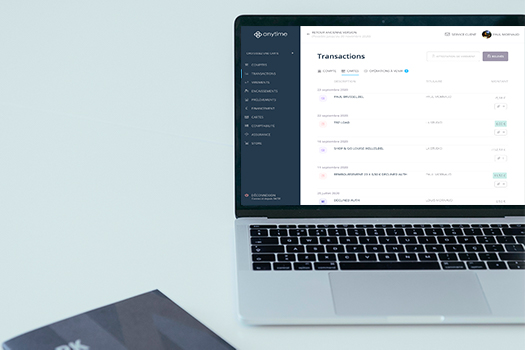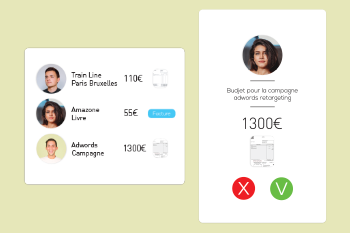Même si cette activité connait un essor important depuis quelques années, devenir chauffeur Uber ne s’improvise pas. Il s’agit d’un véritable projet professionnel qui nécessite d’y consacrer du temps. Pour être chauffeur VTC professionnel, vous devrez réaliser certaines démarches incontournables telles que: + suivre une formation à la réglementation et à la sécurité, + obtenir un numéro SIREN.

Voici comment procéder pour lancer votre nouvelle activité sur la plateforme.
Étape 1 : obtenir l’autorisation de transport de personnes
Pour devenir chauffeur Uber, il est indispensable d’être titulaire de la carte professionnelle VTC (Voiture de transport avec chauffeur). Pour cela, vous devrez valider un examen d’une durée de 3h50 qui comporte 7 épreuves : + la réglementation des transports + la sécurité routière + la gestion d'une entreprise + la compréhension du français + la compréhension de l'anglais + le développement commercial + la règlementation nationale des VTC
Selon les épreuves, il s’agit soit d’un QCM (questions à choix multiples), soit d’un QRC (questions à réponses courtes). La réussite de cet examen ne suffit pas pour obtenir la carte professionnelle. La profession de VTC est réglementée, vous devrez également remplir plusieurs conditions pour pouvoir l’exercer : + être titulaire du permis B depuis plus de 3 ans (ou 2 ans en cas de conduite accompagnée) + avoir suivi l'enseignement de PSC1 (Prévention et secours civiques de niveau 1) au cours des 2 dernières années + être jugé apte à exercer au cours de la visite médicale obligatoire + ne pas avoir fait l’objet d’une sanction pour conduite sans permis + ne jamais avoir été condamné à une peine de prison de plus de 6 mois + ne pas avoir fait l’objet d’une réduction de la moitié des points du permis de conduire
Étape 2 : créer sa société de transport
Choisir un statut pour être chauffeur privé
Une fois en possession de votre carte VTC, vous devez choisir un statut juridique pour votre activité. Vous avez le choix entre une entreprise individuelle (microentreprise, EI ou EIRL) ou une société unipersonnelle (SASU, EURL).
Si le statut de micro-entrepreneur semble intéressant par sa simplicité de mise en œuvre et de gestion, il n’est plus adapté lorsque l’activité se développe. En effet, le régime de la microentreprise implique une limite de chiffre d’affaires. Mais surtout, il ne permet pas de déduire ses charges professionnelles, alors qu’elles peuvent être relativement importantes pour un chauffeur VTC (essence, location de la voiture, cotisations sociales, etc.).
C’est pour ces raisons que de nombreux chauffeurs VTC optent pour la création de sociétés.
S’inscrire au registre des VTC pour obtenir la licence VTC
Une fois votre entreprise créée, vous devez encore obtenir une licence VTC avant de pouvoir exercer. Pour cela, inscrivez-vous au registre des VTC par courrier ou en ligne sur le site du Ministère des Transports. Il faudra compter environ 1 mois pour que l’inscription soit effective. La licence est valable 5 ans. Pour vous inscrire au registre des VTC, vous devrez fournir les documents suivants : + une attestation de responsabilité civile professionnelle + une copie du justificatif d'immatriculation de l'entreprise (extrait K-Bis pour les sociétés ou avis de situation au répertoire SIRENE pour les micro-entrepreneurs) + une copie du certificat d’immatriculation du véhicule que vous utiliserez pour votre activité + une copie recto-verso de votre carte professionnelle VTC + un justificatif de capacité financière de minimum 1 500 €, sauf si vous êtes propriétaire du véhicule ou locataire de longue durée (contrat de location de plus de 6 mois). Pour les sociétés, un capital social de 1 500 € peut faire office de justificatif de capacité financière.
Les frais d’inscription au registre des VTC s’élèvent à 195 €. Lorsque votre inscription sera validée, vous recevrez votre attestation avec votre numéro d'inscription au registre. Vous pourrez alors compléter et imprimer le macaron rouge des chauffeurs VTC à apposer à l'avant et à l'arrière de votre véhicule.
En attendant de recevoir votre attestation définitive d’inscription au registre VTC et pour vous permettre de débuter votre activité plus rapidement, Uber peut vous louer une « licence provisoire ». Dans ce cas, la plateforme vous prélève une commission supplémentaire, en plus de la commission habituelle.
Étape 3 : j’ai mon SIREN, comment devenir chauffeur Uber ?
S’équiper d’un véhicule adapté
Pour devenir chauffeur Uber, vous devez acquérir ou louer un véhicule homologué par la plateforme. Les véhicules sont classés en 5 catégories : + la gamme UberX : véhicule de moins de 6 ans, de 4 à 9 places, sans restriction de couleur + la gamme UberACCESS (transport de personnes à mobilité réduite) : véhicule TPMR et certificat de formation TPMR (les véhicules rentrent également dans la catégorie UberX) + la gamme Van (Paris et côte d’Azur uniquement) : véhicule de moins de 4 ans de couleur sombre avec finitions haut de gamme. Le chauffeur doit compter au moins 2 000 courses et avoir une note de 4,75 ou plus + la gamme Berline (Paris, Lyon et Côte d’Azur) : véhicule haut de gamme de moins de 4 ans de couleur sombre. Le chauffeur doit compter au moins 5000 courses et avoir une note de 4,8 ou plus. + la gamme UberGREEN (Paris uniquement) : véhicules de type hybride ou électrique
Souscrire les assurances nécessaires
Le métier de chauffeur VTC engendre des risques pour vous, mais aussi pour vos clients et les autres usagers de la route. C’est pourquoi, il est obligatoire de souscrire à : + une RC Pro (Responsabilité Civile Professionnelle) qui couvre les dommages causés à un client ou à un tiers dans le cadre de votre activité. + une RC Circulation (Responsabilité Civile Circulation) qui prend en charge les dommages causés sur un client ou un tiers impliquant votre véhicule professionnel.
Être chauffeur VTC n’est pas une activité à prendre à la légère. Compte tenu des différentes facettes que comporte ce métier (relation client, conduite), il est nécessaire de bien se pencher sur la question avant d’entamer les démarches.
Sachez également que quel que soit le statut juridique que vous choisissez, il vous sera nécessaire d’avoir un compte bancaire dédié. Pour cela, Anytime propose un compte professionnel dont les services seront parfaitement adaptés à votre activité.








